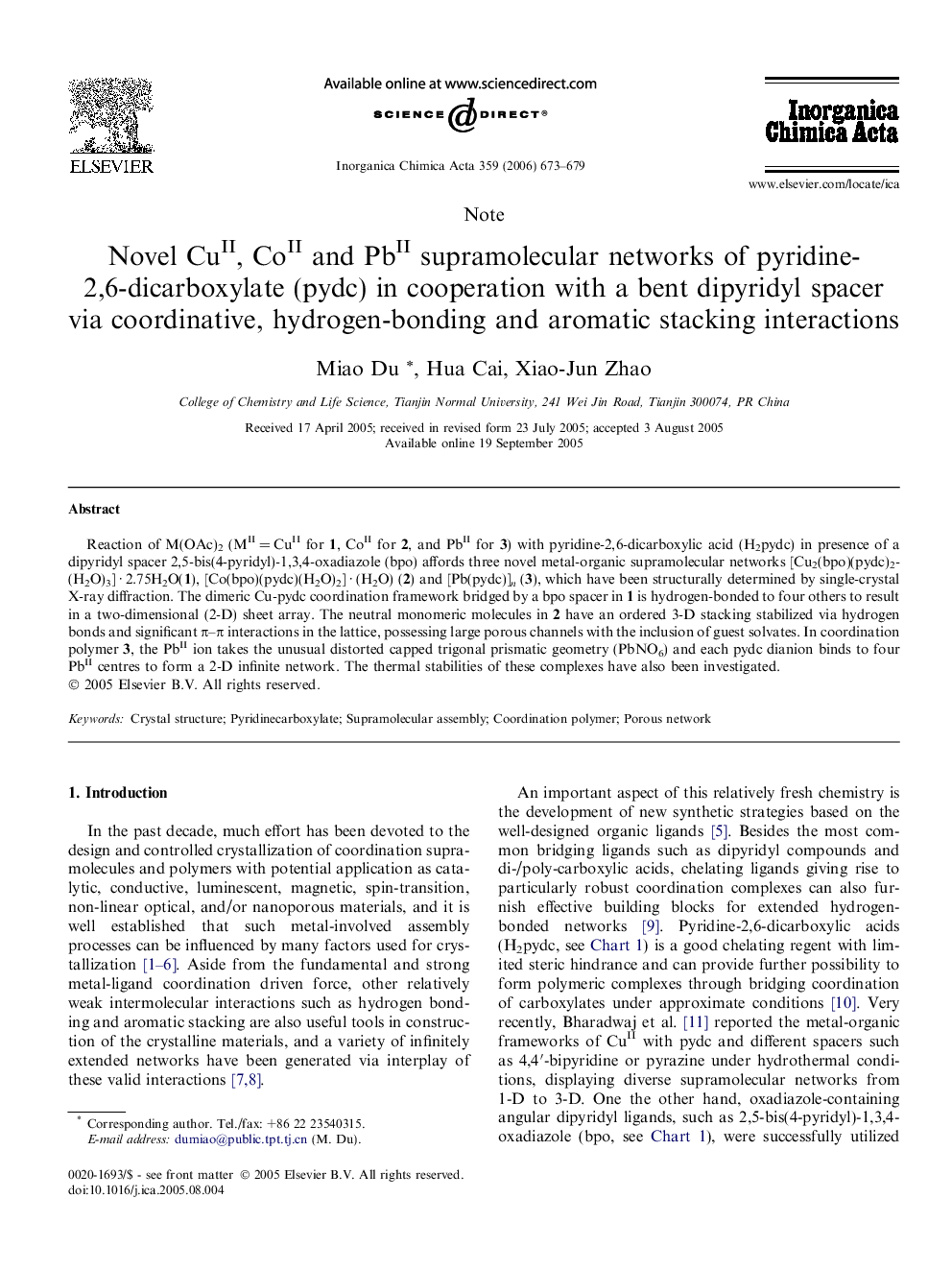| Article ID | Journal | Published Year | Pages | File Type |
|---|---|---|---|---|
| 1311784 | Inorganica Chimica Acta | 2006 | 7 Pages |
Reaction of M(OAc)2 (MII = CuII for 1, CoII for 2, and PbII for 3) with pyridine-2,6-dicarboxylic acid (H2pydc) in presence of a dipyridyl spacer 2,5-bis(4-pyridyl)-1,3,4-oxadiazole (bpo) affords three novel metal-organic supramolecular networks [Cu2(bpo)(pydc)2(H2O)3] · 2.75H2O(1), [Co(bpo)(pydc)(H2O)2] · (H2O) (2) and [Pb(pydc)]n (3), which have been structurally determined by single-crystal X-ray diffraction. The dimeric Cu-pydc coordination framework bridged by a bpo spacer in 1 is hydrogen-bonded to four others to result in a two-dimensional (2-D) sheet array. The neutral monomeric molecules in 2 have an ordered 3-D stacking stabilized via hydrogen bonds and significant π–π interactions in the lattice, possessing large porous channels with the inclusion of guest solvates. In coordination polymer 3, the PbII ion takes the unusual distorted capped trigonal prismatic geometry (PbNO6) and each pydc dianion binds to four PbII centres to form a 2-D infinite network. The thermal stabilities of these complexes have also been investigated.
Graphical abstractThree new metal pyridine-2,6-dicarboxylate (pydc) supramolecular networks [Cu2(bpo)(pydc)2(H2O)3] · 2.75H2O (1), [Co(bpo)(pydc)(H2O)2] · (H2O) (2) and [Pb(pydc)]n (3), were hydrothermally prepared in presence of a bent dipyridyl spacer 2,5-bis(4-pyridyl)-1,3,4-oxadiazole (bpo). The bpo-bridged dinuclear complex 1 exhibits a 2-D hydrogen-bonded sheet and the coordination polymer 3 has a 2-D infinite metal-organic framework. Significantly, the monomeric complex 2 display a unique 3-D supramolecular architecture with large porous channels formed through hydrogen-bonding and aromatic stacking interactions.Figure optionsDownload full-size imageDownload as PowerPoint slide
